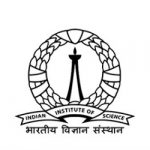New Study at Berkeley Lab Demonstrates Key Components for a Qutrit-Based Quantum Computer

(HPC.Wire) A team led by physicists at Lawrence Berkeley National Laboratory (Berkeley Lab) and UC Berkeley has successfully observed the scrambling of quantum information, which is thought to underlie the behavior of black holes, using qutrits: information-storing quantum units that can represent three separate states at the same time. Their efforts also pave the way for building a quantum information processor based upon qutrits.
The new study, recently published in the journal Physical Review X, makes use of a quantum circuit that is inspired by the longstanding physics question: What happens to information when it enters a black hole?
Beyond the connection to cosmology and fundamental physics, the team’s technical milestones that made the experiment possible represent important progress toward using more complex quantum processors for quantum computing, cryptography, and error detection, among other applications.
While black holes are considered one of the most destructive forces in the universe – matter and light cannot escape their pull, and are quickly and thoroughly scrambled once they enter – there has been considerable debate about whether and how information is lost after passing into a black hole.
Quantum entanglement defies the rules of classical physics, allowing particles to remain correlated even when separated by large distances so that the state of one particle will inform you about the state of its entangled partner. If you had two entangled coins, for example, knowing that one coin came up heads when you looked at it would automatically tell you that the other entangled coin was tails, for example.
Most efforts in quantum computing seek to tap into this phenomenon by encoding information as entangled quantum bits, known as qubits (pronounced CUE-bits). Like a traditional computer bit, which can hold the value of zero or one, a qubit can also be either a zero or one. But in addition, a qubit can exist in a superposition that is both one and zero at the same time. In the case of a coin, it’s like a coin flip that can represent either heads or tails, as well as the superposition of both heads and tails at the same time.
there are a number of technical hurdles to building quantum computers with a large number of quantum bits that can operate reliably and efficiently in solving problems in a truly quantum way.
In this latest study, researchers detail how they developed a quantum processor capable of encoding and transmitting information using a series of five qutrits, which can each simultaneously represent three states. And despite the typically noisy, imperfect, and error-prone environment of quantum circuity, they found that their platform proved surprisingly resilient and robust.
Qutrits can have a value of zero, one, or two, holding all of these states in superposition. In the coin analogy, it’s like a coin that has the possibility of coming up as heads, tails, or in landing on its thin edge.
The team set out to replicate the type of rapid quantum information smearing, or scrambling, in an experiment that used tiny devices called nonlinear harmonic oscillators as qutrits.
The testbed, which began accepting proposals from the quantum science community in 2020, is a collaborative research laboratory that provides open, free access to users who want to explore how superconducting quantum processors can be used to advance scientific research. The demonstration of scrambling is one of the first results from the testbed’s user program.



















